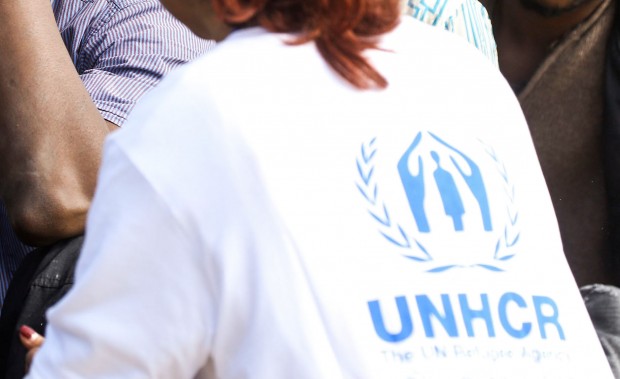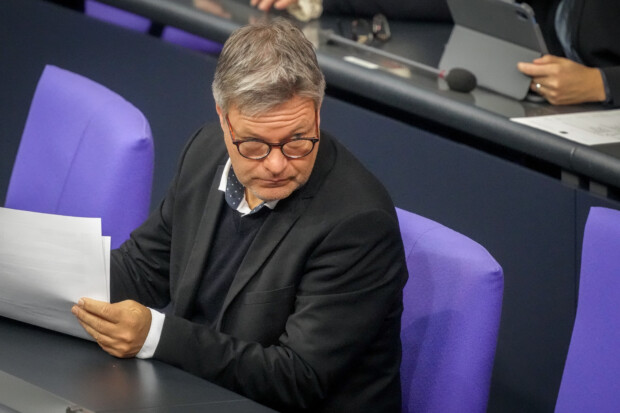Paula Barrachina Esteban koordiniert die Arbeit des UNHCR in Libyen und beantwortete im Interview Fragen von TE.

 Getty Images
Getty Images
Nach Gesprächen mit dem Büro des UNHCR (Amt der Vereinten Nationen für Flüchtlinge und humanitäre Hilfe) in Berlin, hatten wir Gelegenheit, mit Paula Barrachina Esteban zu sprechen. Sie koordiniert die Arbeit des UNHCR in Libyen.
Zunächst erzählte uns Frau Esteban etwas über die schwierige Lage des UNHCR in Libyen. Aufgabe und Mandat sei es, Flüchtlingen, Asylsuchenden und Binnenvertriebenen (IDP’s) überhaupt Schutz und humanitäre Unterstützung zu bieten. Für Frau Esteban hilft die Arbeit des UNHCR auch dem Land Libyen, langfristige Lösungen für das Migrationsproblem zu finden. Der UNHCR sucht solche Lösungen insbesondere für Frauen und Kinder.
Aktuell hat sich der UNHCR den „Meilenstein“ gesetzt, 40.000 Personen über diese Programme in den aufnehmenden Ländern neu anzusiedeln. Deutschland hat bereits zugesagt, 10.200 Umsiedlungsflüchtlinge aufzunehmen, Frankreich die gleiche Anzahl.
Diese Resettlement-Programme sind für Personen gedacht, die nachweislich den Flüchtlingsstatus des UNHCR erfüllen. Eine Hauptaufgabe des UNHCR ist es daher auch, weltweit eine Registrierung von Migranten bzw. die Prüfung ihres Asylstatus durchzuführen über eine „Refugees Status determination“ (RSD).
Nach nochmaliger Rücksprache mit dem UNHCR Berlin geht es hier nicht etwa um Evakuierungen aus den Heimatländern, sondern um eine Feststellung des Status in einem Erstzufluchtsland. Wenn nun beispielsweise dieses Erstzufluchtsland nicht die Mindestvoraussetzungen für einen Asylaufenthalt erfüllt, versucht der UNHCR diese Personen über Resettlement-Programme an aufnahmebereite Länder zu vermitteln.
Niger ist hier aktuell ein zentraler Ort für den UNHCR, Personen sich Richtung Mittelmeer auf den Weg machen wollten über die Resettlement-Programme umzusiedeln.
Frau Esteban bezeichnet im Interview die Zusammenarbeit mit der libyschen Zentralregierung als positiv und konstruktiv. Nach Schätzungen des UNHCR sind aktuell 6.000 Personen in Libyen in Verwahrung, nachdem sie von der libyschen Küstenwache wieder zurück nach Libyen gebracht wurden. Der UNHCR hat Zugang zu den meisten Lagern, allerdings gäbe es Sicherheitsbedenken, die das nicht immer ermöglichen. Frau Esteban gibt aber auch zu bedenken, dass der UNHCR keinen Zugang zu Lagern und Sammelstellen der Schlepper hätte. Hier fordert der UNHCR eine entschlossenere Verfolgung der Schlepper.
Der UNHCR führt keine eigenen Lager in Libyen. Überhaupt hätte man generell Bedenken, was solche geschlossene Einrichtungen angehe. Der UNHCR setzt hier gegenüber der libyschen Zentralregierung auf Alternativen der Unterbringung.
Frau Esteban betont explizit die Notwendigkeit von Rettungsoperationen vor der libyschen Küste und dankt hier ausdrücklich allen Beteiligten, die sich bemühen, in Seenot geratene Menschen zu retten, betont allerdings auch, eine Priorität des UNHCR sei es, über faire und transparente Wiederansiedlungsprogramme neue Alternativen aufzuzeigen. Ein Hauptaugenmerk sei hier auf jene Menschen, insbesondere Frauen mit Kindern und Familien gerichtet, deren Bedürftigkeit im besonderen Maße festgestellt wurde, um ihnen an erster Stelle diese Programme anbieten zu können.
♦
Nachfolgend die Fragen und Antworten in voller Länge.
Bitte erläutern Sie, welche Aufgabe Sie und Ihre Kollegen für den UNHCR in Nordafrika/ Libyen erfüllen.
UNHCR is present in Libya to provide protection and humanitarian assistance to persons of concern under its mandate: refugees, asylum-seekers, internally displaced persons (IDP) and returnees. Over half a million persons have either been displaced or returned to their areas of origin in the country (179,400 IDPs and 372,022 returnees).
With regard to the IDP response, we target all areas, security permitting, where displaced and returnee Libyans are living, with a view to meet basic needs, ensure the provision of essential services and help make returns sustainable including through supporting the reintegration process. We help communities with rehabilitation of essential services like schools or hospitals and provide shelter to those Libyans whose houses are partially or totally destroyed. We also help with cash grants – more than 2,000 households received support so far in 2018. From now until end 2018, we are implementing small-scale programs (quick-impact projects) around the country to help Libyan communities and displaced persons access basic services and rights. For example, we provided container-classrooms and desks to ensure that there are enough schools that can accommodate displaced students. We have also rehabilitated public infrastructures, such as sports facilities and youth centres, waste management systems and clinics. We also provide material support such as blankets, kitchen sets or clothes to displaced families. In 2018, more than 20,000 IDPs and returnees received support.
With regard to the refugee response, there are 54,001 registered asylum seekers and refugees living in Libya coming from Syria, Iraq or Eritrea, for example, who have suffered immensely back home and are looking for safety and protection. Many perish while crossing the Mediterranean searching for safety in Europe. Many have traveled for months to reach Libya, walking through the desert with no water and food. Many have fallen prey of criminal networks and have suffered immensely under captivity. Our work helping refugees also helps Libya as a country, as it is part of the international community’s efforts of sharing the responsibility of tending to their needs, and we are contributing to find durable solutions for them.
We are helping refugees to find solutions outside Libya, especially for those most vulnerable such as women and children – we have called for additional resettlement places for refugees in Libya. We are increasing our programme to help refugees find solutions in other countries. In addition, as of July, UNHCR submitted a total of 551 individuals for resettlement to third countries and evacuated 1,858 refugees since November 2017. 1,536 to UNHCR’s ETM in Niger, 312 to Italy and 10 individuals to the ETM in Romania. Finding solutions in other countries can take time, and it is not a solution available for all refugees. Pending solutions, we will of course help refugees with humanitarian assistance and accommodation when possible. Inside Libya, there are specific locations– our community day centres– where refugees can seek our help, including medical assistance.
Within the framework of coordination, as a member of the United Nations Country Team (UNCT) and Humanitarian Country Team (HCT) in Libya, UNHCR leads the Protection Sector, the Shelter/NFI Sector and Cash & Market Working Group and co-leads, together with the International Organization for Migration (IOM), the Mixed Migration Working Group (MMWG).
Wie viele Mitarbeiter des UNHCR sind aktuell in Libyen tätig? Und viele Mitarbeiter anderer Organisationen sind tätig, die vom UNHCR beauftragt wurden, Aufgaben vor Ort zu erfüllen?
UNHCR has more than 150 staff working in Libya, both national and international. Since the lifting of the evacuation status of the United Nations in Libya, UNHCR international staff are permanently based in the country.
Wie funktioniert die Zusammenarbeit des UNHCR mit der libyschen Zentralregierung? Wie gestaltet sich diese Zusammenarbeit, welche sind die Erfolge, wo die Schwierigkeiten?
UNHCR is present in Libya since 1990 and has gradually expanded its operations to support the humanitarian response for both refugees and IDPs. UNHCR works with the Libyan authorities to enhance the protection of its persons of concern in Libya. Cooperation is positive and constructive.
In November 2017, we welcomed the decision by the Libyan authorities to set up a “transit and departure facility” in Tripoli for people in need of international protection. This initiative will facilitate the transfer of many vulnerable refugees to third countries. We hope that many of the most vulnerable refugees currently in Libya will benefit from this initiative, which has as main objective is to speed up the process of securing solutions in third countries. There solutions may include resettlement, family reunification, evacuation to UNHCR-run emergency facilities in other countries, or voluntary repatriation, as appropriate. Currently, we are rehabilitating the premises with a view to eventually accommodate 1,000 persons of concern.
Wie frei ist ihr Zugang zu den Lagern der Zentralregierung für den UNHCR, wie würden Sie die Zustände vor Ort beschreiben, welche Unterschiede bestehen zu Lagern, die nicht der Zentralregierung unterstehen?
Conditions in detention are of concern and below international standards. Our work in detention centres responds to a humanitarian imperative to save lives. At detention centres, we are providing medical assistance and humanitarian relief. We are working together with the authorities to ensure refugees can be released from detention – so that we can work towards finding solutions for the most vulnerable. In 2018, 1,525 refugees and asylum-seekers were released from detention for the purpose of evacuation thanks to our efforts and advocacy (1,428 in 2017). We are also advocating for release into the community as per practice in place before the end of 2017.
The number of detention centres in Libya varies. We have access to the majority of detention centres, but access is not always possible due to security conditions.
At present, more than 6,000 refugees and migrants are detained in Libya. UNHCR does not have access to locations where refugees are being kept captive by smugglers. We remain concerned about human trafficking and smuggling along the routes to Europe and call for the effective prosecution of those involved in human trafficking, forced labor and other human rights abuses.
Die libysche Küstenwache wird teilweise von der EU ausgerüstet und ausgebildet. Wenn die libysche Küstenwache Menschen im Mittelmeer aufnimmt und nach Libyen zurückbringt, werden diese Menschen dann in Lager der Zentralregierung gebracht?
Once refugees and migrants are disembarked in Libya, there are taken to a detention centre, transferred by detention authorities. It must be noted that first and foremost, as a matter of principle we are opposed to the detention of refugees, particularly of women and children. While we oppose arbitrary detention we must remain engaged in order to help refugees wherever they are, including in detention. Our work in detention centres responds to a humanitarian imperative to save lives and reach out to refugees wherever they are. Our priority is the protection of refugees and ensuring they have access to their rights. In light of this, we have been advocating for alternatives to detention in Libya. While there is still a lot of work to do, this year alone we have managed to release 1,525 refugees from detention in Libya (and last year our advocacy led to the release of 1.428 POCs).
UNHCR and its partner International Medical Corps (IMC) assist those disembarked with primary healthcare and non-food items at disembarkation points and in the detention centres where refugees and migrants are transferred.
Können Sie genauer sagen welche Aufnahmelager Sie meinen?
UNHCR does not manage any “reception camps”, and continues to advocate for alternatives to detention.
Wenn die deutsche Bundeskanzlerin in ihrer Regierungserklärung betont, die Arbeit der libyschen Küstenwache müsse gefördert und unterstützt werden, wie ist dazu die Haltung des UNHCR, wie Ihre persönliche?
UNHCR’s cooperation with the Libyan Coast Guard (LCG) has as its primary objective to ensure that basic humanitarian needs are met upon disembarkation and persons of concern to UNHCR are identified, their presence recorded and provided with initial support. As part of the responses to mixed maritime movements, appropriate disembarkation and reception arrangements are needed to ensure that the immediate basic needs of people involved in such movements can be met and tailored according to their specific needs. UNHCR conducts regular capacity building activities with the LCG on international refugee law.
Was sagen Sie zum Vorwurf, die Seenotrettungsschiffe der NGO im Mittelmeer hätten einen Pullfaktor ausgelöst? Können Sie Auskunft darüber geben, wie sehr sich die Schlepper in Libyen an der Anwesenheit dieser Boote orientieren? Und wie sehr ist ihrer Erfahrung nach der schlechte Zustand dieser Schlauchboote der Anwesenheit der Seenotretter geschuldet?
UNHCR’s priority is to ensure that lives are not lost at sea. We stress the importance of respecting the internationally recognised legal obligation to rescue boats in distress, ensuring their disembarkation in a place of safety and protection from refoulement, and the right of individuals to seek asylum.
UNHCR is concerned that men, women and children continue to die at sea, and in proportionally larger numbers. Already in 2018, the bleak milestone of dead and missing has reached over 1,000 for the fifth year in a row, despite the lower numbers crossing to Europe. In June alone, one person died for every seven who crossed the Central Mediterranean, compared to one in 19 in the first half of this year and one in 38 in the first half of 2017.
The high loss of life illustrates the urgent need to strengthen search and rescue capacities in the region. UNHCR thanks all those involved in rescue operations, but with so many lives at stake, we reiterate the absolute importance, aligned with the obligations under the law of the sea, to permit efforts to respond to people distress at sea.
Was können Sie über diese Schlepperstrukturen sagen? Inwieweit behindern diese kriminellen Strukturen die Arbeit des UNHCR in Libyen?
The reality is that refugees and migrants travelling through Libya continue to be exposed to risks of grave human rights violations, by traffickers and smugglers. UNHCR is a part of the UN family and the broader international response to addressing human trafficking and ensuring respect and protection of human rights. We support on-going efforts to combat trafficking mainly to ensure that POCs are referred for international protection.
Können Sie Angaben machen zum UNHCR Ressettlement-Programm, der Anzahl der Menschen, die so nach Europa gelangen in einem bestimmten Zeitraum, wie sicher die Routen hier gestaltet sind, von welchen Flughäfen die Menschen nach Europa geflogen werden? Was können Sie über die Auswahlkriterien sagen?
Since 1 September 2017, 601 individuals have been submitted for resettlement to 8 States (Canada, France, Germany, Italy, Netherlands, Norway, Sweden, and Switzerland). A total of 70 individuals have departed on resettlement directly from Libya to Canada, France, Sweden and the Netherlands.
A total of 10 individuals have been accepted for resettlement and are pending departure directly from Libya to Sweden. A total of 551 individuals have been submitted for resettlement and are pending interview or decision by a resettlement State in Libya. Departures took place from Tripoli.
Ensuring fair and transparent access to the resettlement process is a UNHCR priority. The most vulnerable refugees are sometimes the least visible and vocal. Effective identification and referral mechanisms concentrate on proactively ensuring access to the resettlement process for those most in need. UNHCR has developed a range of tools and methodologies to increase UNHCR’s ability to identify needs, and respond better to them.
The identification of refugees potentially in need of resettlement, and the subsequent assessment of individual cases is an ongoing, active and systematic process. It requires detailed knowledge and documentation of the refugee population and of their specific needs and vulnerabilities, and collaboration between UNHCR Protection, Community-Based Protection and Durable Solutions staff and implementing partners to identify and implement appropriate responses.
UNHCR has set the milestone of 40,000 additional resettlement places to be made available by resettlement states globally for refugees along the Central Mediterranean route. UNHCR is also calling for the facilitation of complementary pathways for refugees along the Central Mediterranean route in addition to the initial figure of 40,000 resettlement places. For example, family reunification, scholarships. There is much still to be done in this regard. Resettlement and complementary pathways from countries of asylum across all three priority sub-regions, through flexible commitments that can be allocated in accordance with the needs are being sought.
Wer entscheidet vor Ort, wer in das Programm aufgenommen wird? Wie schwer fallen solche Entscheidungen, die ja häufiger ein „Nein“, als ein „Ja“ bedeuten. Was würden Sie jemandem entgegnen, der behaupten würde, dass auch das UNHCR Ressettlement-Programm einen Pullfaktor bedeutet?
Resettlement is limited in scale – and is a solution that can be offered for the most vulnerable. We seek to ensure that those persons who are most in need have access to safety in a third country. It is important however to acknowledge the challenges that we face with identification given security and access constraints.
UNHCR has run large-scale resettlement programmes in many regions and adherence to objective and protection-based criteria remains a key safeguard in ensuring the integrity of these programmes.
Ensuring a comprehensive response across all affected sub-regions and countries of asylum in West, East and Horn and North Africa will be critical in reducing the need for onward movements across the region and avoiding the creation of a pull factor from other refugee-hosting countries in the region.



























Sie müssenangemeldet sein um einen Kommentar oder eine Antwort schreiben zu können
Bitte loggen Sie sich ein
Dann gibt es also bereits die so geächteten Asylzentren in Nordafrika, betrieben vom UNHCR?
Würde gerne betrieben durch betreut ersetzen.
Ich frage mich, weshalb das nur in eine Richtung gehen soll?
Weshalb geben sie uns nicht wenigstens in Afrika einen Siedlungsraum, den wir dann für uns kultivieren können?
UNHCR verteilt in 10 000 – Personenkontingenten/Jahr Schutzbedürftige in die Industriestaaten, während in Afrika 100 000 Babys täglich (!) geboren werden. Wie homöopathisch-frustran ist das denn?
Nochmals zur Erinnerung. Bevölkerungsdichte ( Einwohner pro Quadratkilometer ) Nigeria 130, Senegal und Südafrika 65 – Deutschland 230, Belgien 360, Niederlande 410 !!!!
rechte MousTaste im google Chrome : Uebersetzen in Deutsch …
soooo einfach 🙂
Tip: Können auch Browser. Mit der rechten Maustaste klicken und „übersetzen in deutsch“.
Ich werde niemals verstehen, wie man Kinder in die Welt setzten kann, wenn die Lebenssituation ungeklärt bzw. bedrohlich ist.
Das ist westliches-zivilisiertes Denken, das auch im privaten Bereich von Verantwortungsethik geprägt ist. Wir haben es hier aber mit Menschen aus archaischen, tribalistischen Kulturen zu tun. Denen geht Verantwortungsgefühl für ihre Handlungen vielfach ab. Die Welt ist nicht gleich, One World eine seltendumme Phrase. Und die Menschen sind schon gar nicht gleich.
Weiter geht es mit den Organisationen, die nichts bewirken und und zu nichts nutze sind.
Trump ist einer der wenigen, die das erkannt haben…und handelt.
Das sehe ich ähnlich. Auch wenn Herr Trump inzwischen meine in ihn gesetzten Hoffnungen zunichte gemacht hat ( Rußlandsanktionen, Naher Osten u.a. ), hat er zumindest die nutzlose Geldverschwendung der UN Organisationen erkannt. Da werden Milliarden für hohe Funktionärsgehälter, Kongresse und andere schöne Reisen vergeudet. Die UN hat weder Kriege verhindert, noch das gravierende Problem der Bevölkerungsexplosion auch nur ansatzweise gelöst. Alles was denen einfällt, ist die Überbevölkerung ungefragt nach Europa zu verlagern, das ohnehin schon dichter als zum Beispiel Afrika besiedelt ist. Das gleiche gilt für das sogenannte “ Klimaschutzabkommen „, das letztlich nur viel Geld in die Kassen… Mehr
Auf die wichtigsten, interessantesten und entscheidendsten Frage gibt Frau Esteban keine konkrete Antworten und redet – wie wohl auch zu erwarten ist – galant um den heißen Brei herum.
Jetzt sind es also keine Flüchtlinge und Migranten mehr, sondern offiziell Siedler. Klingt ja ganz so, als hätten wir noch irgendwo Brachland in unbekannter Menge, was wir diesen Leuten schenken, und dazu noch ein paar Ziegen. 40.000 Leute zu übernehmen, ist bei dem Geburtenüberschuss Afrikas ein Treppenwitz, quasi nicht mehr wie ein Tageswurf. Das löst kein Problem, führt nur dazu, dass immer mehr hierher verfrachtet werden sollen.